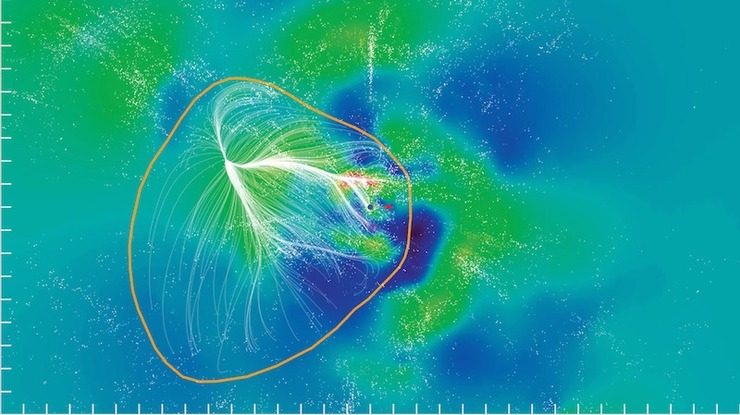SUMMARY
This is AI generated summarization, which may have errors. For context, always refer to the full article.

PARIS, France – Astronomers said Wednesday, September 3, they have mapped the galaxy supercluster of which our Solar System forms a tiny part, and named the mighty mass Laniakea, or “immense heaven” in the language of Hawaii.
Laniakea comprises some 100,000 galaxies with about a hundred million billion suns, they reported in the journal Nature.
It would take 500 million years, traveling at the speed of light, to travel from one end of the supercluster to the other.
Galaxies are not distributed randomly throughout the Universe, tending instead to group together. They are connected by a “cosmic web” comprising filaments of matter, tugged by gravity.
Sometimes, thousands of galaxies can crowd together at the intersections of these filaments. But determining the boundaries of these so-called superclusters – defining the regions of space they dominate – has been a big debate.
A team led by Brent Tully at the Institute for Astronomy at the University of Hawaii at Manoa, used a new method to map the supercluster that includes our home.
The team delved into a vast database of galaxies, singling out 8,000 that lie in our cosmic neighborhood, and studied their motion.
They calculated each galaxy’s location by estimating its velocity relative to the expansion of the Universe – the movement initiated by the “Big Bang” some 14 billion years ago.
The biggest challenge was to figure out a phenomenon called the Great Attractor, a flat-bottomed gravitational “valley” within the supercluster.
The Great Attractor has complicated the bid to define this particular supercluster for decades.
It muddles calculations about the motion of galaxies because many are drawn into its “valley” – in the same way that water flows down a slope – even as they experience the outward force exerted by the expansion of the Universe.
Learning about the gravitational machinery of the Great Attractor, the team realized that our supercluster is far bigger than thought. Previous estimates had put it at about 100 million light years across.
The Milky Way, the galaxy that includes our star system, lies on the outskirts of Laniakea, according to a Nature video of the new map.
The name Laniakea was proposed by Nawa’a Napoleon, a professor of the Hawaiian language at the university.
It honors Polynesian navigators who used knowledge of the stars to make extraordinary travels across the Pacific. – Rappler.com
Add a comment
How does this make you feel?
There are no comments yet. Add your comment to start the conversation.